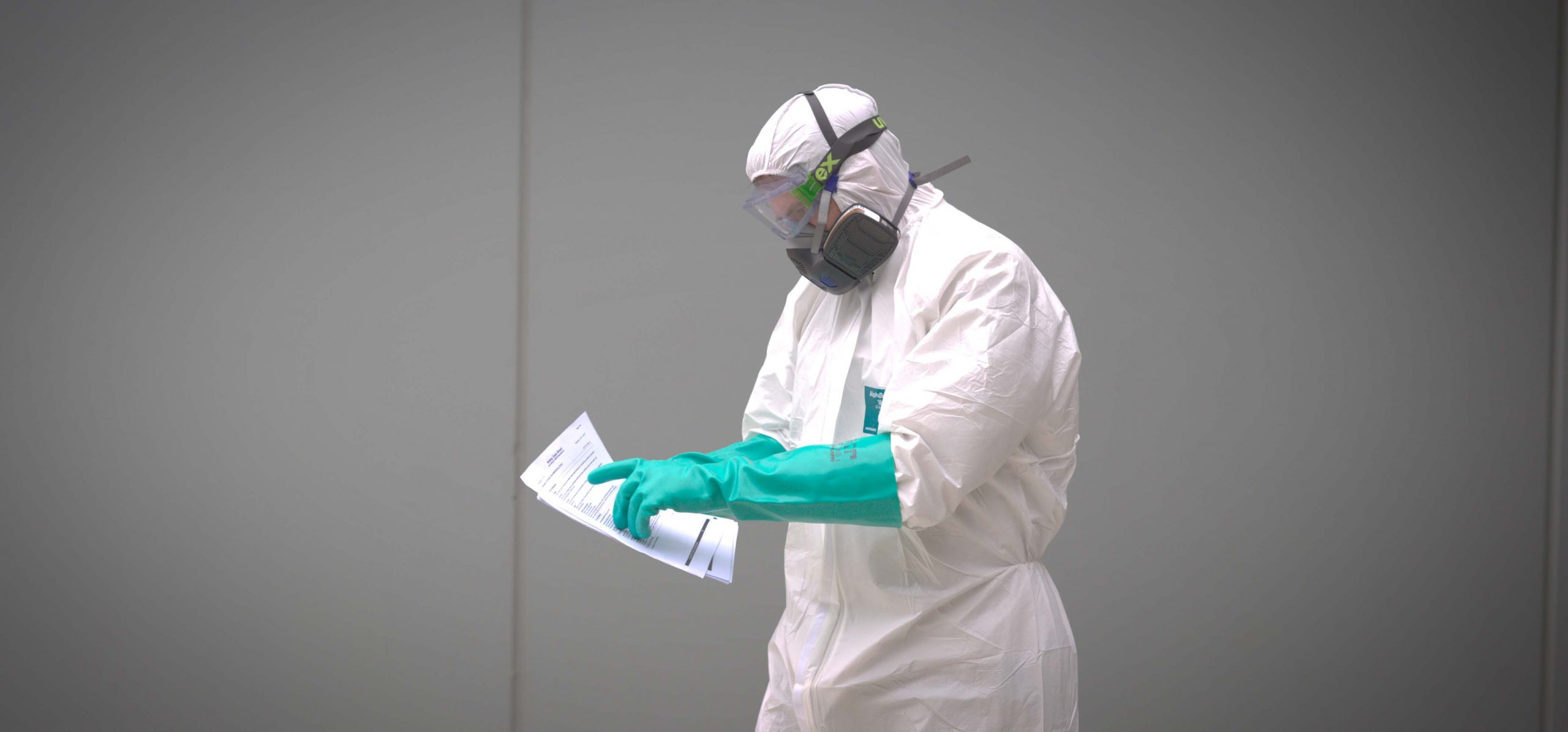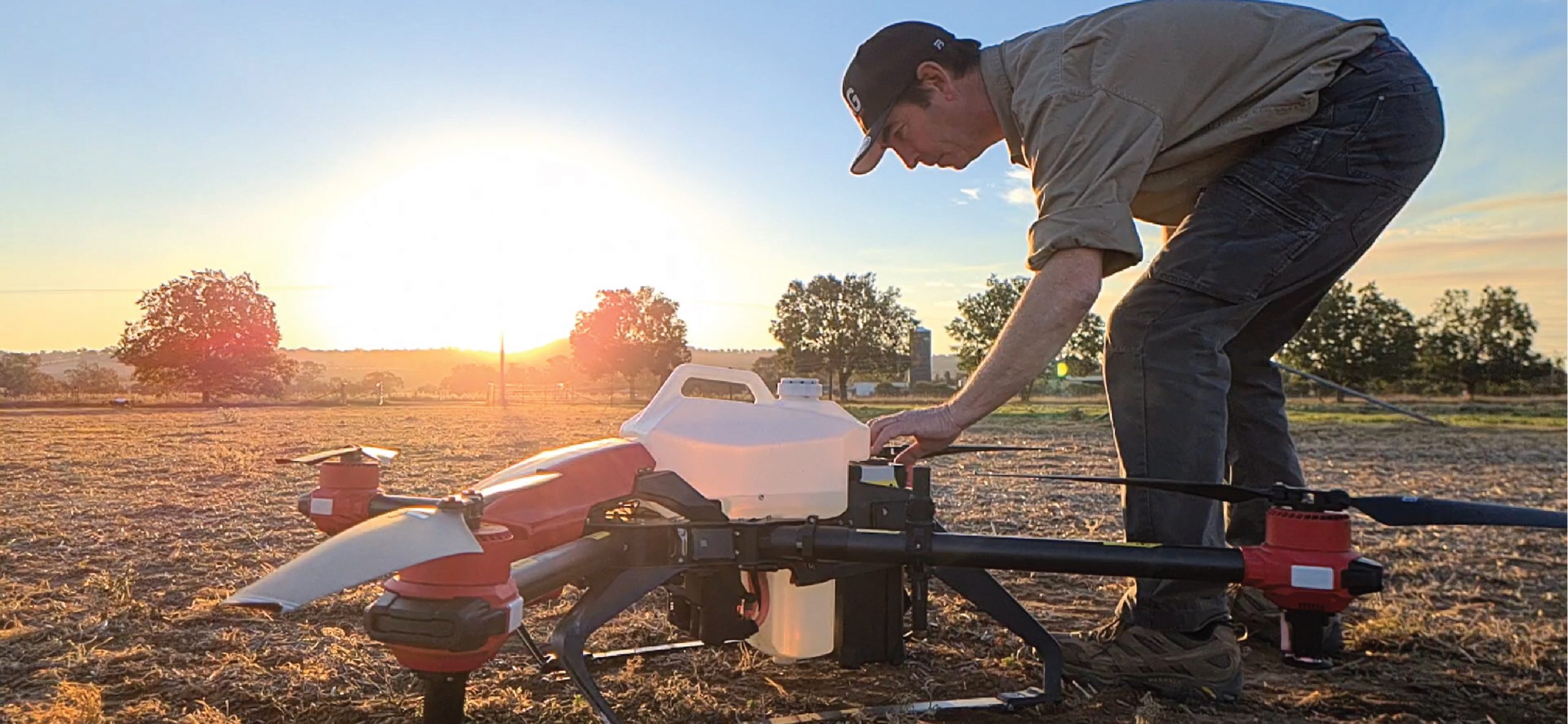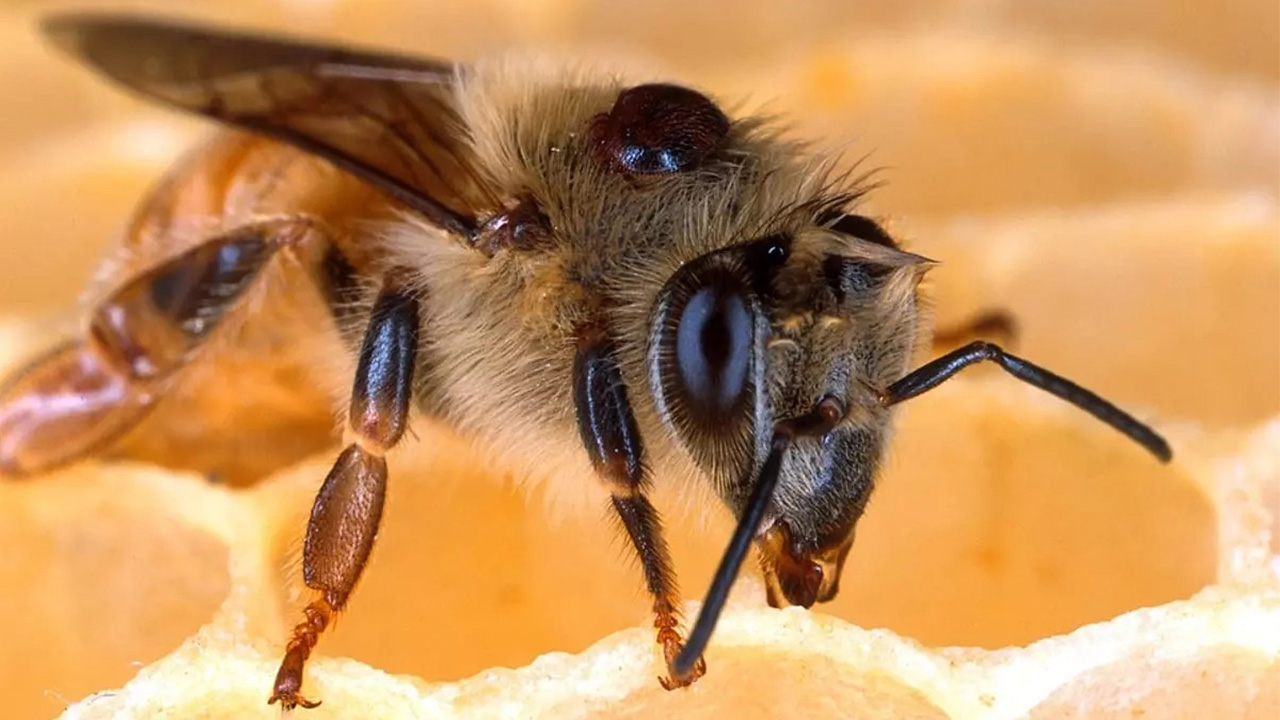
Honey bee with Varroa mite parasite.
As a ChemCert trainer, I am privileged to travel both intra state and interstate, visiting both rural and suburban areas and training students who work in a wide array of industries. Over the years, I’ve conducted courses for students working in vineyards, apple orchards, broadacre, vegetable and organic farms, poultry farms, as well as amenity personnel working on councils or as lawn mowing contractors. I recently had the pleasure of meeting with two groups of students who were all recently employed by the NSW Department of Primary Industry. Their job… eradicate Varroa destructor mite.
Varroa mite was first detected at two sentinel hives at the Port of Newcastle, on June 22nd, 2022. The sentinel hives are designed to detect pests and diseases at their earliest entry and are checked every six to eight weeks.
The Varroa destructor mite poses a significant threat to honeybee populations worldwide, including those in New South Wales (NSW), Australia. This article provides an overview of Varroa destructor, its impact on bees, and the efforts undertaken by the NSW Department of Primary Industry to combat this problem. By understanding the mite’s biology, mode of attack on bees, and the strategies implemented for control, we can work towards safeguarding honeybee populations and the vital ecosystem services they provide.
Varroa destructor Mite: Overview and Life Cycle: Varroa destructor is an external parasitic mite that primarily infests honeybees (Apis mellifera). Originating in Asia, it has spread globally and has been identified as a major contributor to honeybee declines. The mite’s life cycle consists of several stages: the phoretic phase, during which mites attach to adult bees, and the reproductive phase, where mites reproduce inside capped brood cells.
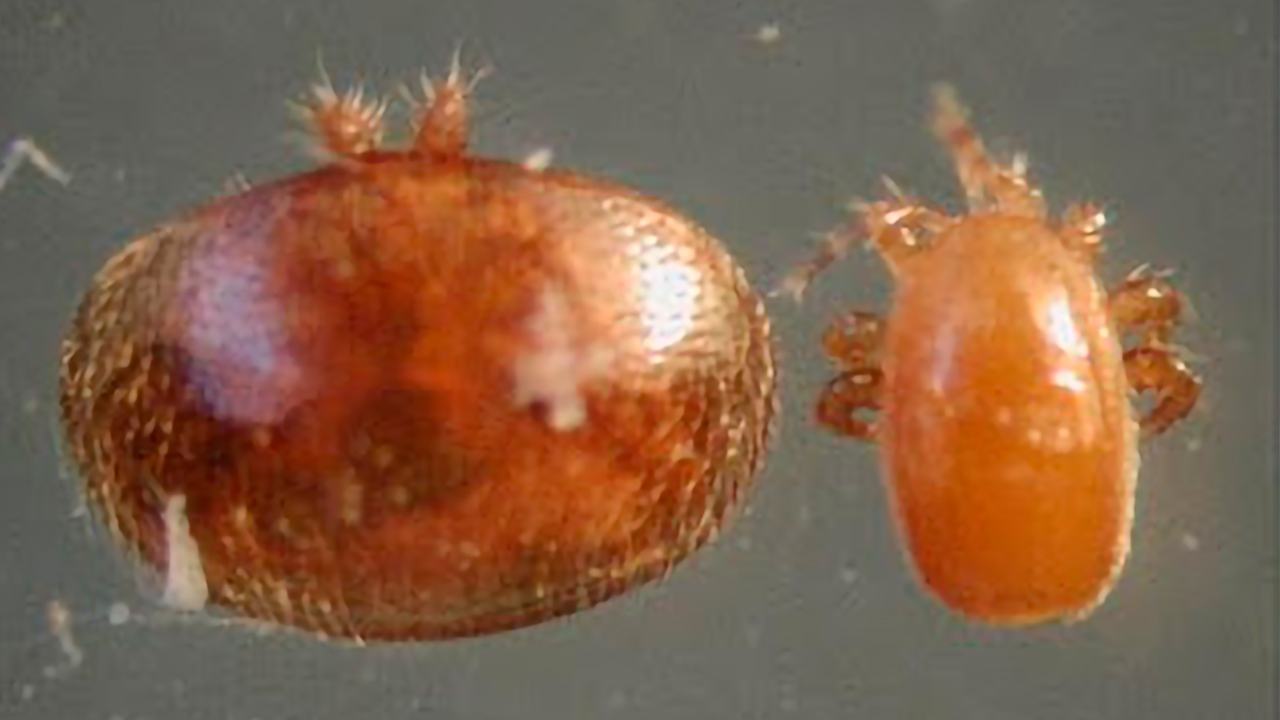
Comparison of varroa (left) and tropilaelaps mite (right)
Attack on Bees:
- Feeding on Hemolymph: Varroa mites feed on the hemolymph of adult bees and developing brood. (The hemolymph is a fluid, like blood). This weakens the bees, leading to reduced immune function, compromised growth, and decreased lifespan.
- Virus Transmission: One of the most severe consequences of Varroa infestation is the transmission of viruses. The mites act as vectors for numerous viruses, including deformed wing virus (DWV), which causes wing deformities and can lead to colony collapse.
- Reproductive Disruption: Varroa mites reproduce within capped brood cells, where they lay eggs and develop. This interferes with the normal development of bees, resulting in weakened individuals, reduced colony strength, and impaired productivity.
Countermeasures by the NSW Department of Primary Industry:
The NSW Department of Primary Industry has been actively engaged in combating Varroa destructor and mitigating its impact on honeybee populations. Several key measures and initiatives have been implemented:
- Surveillance and Monitoring: The department is conducting regular surveillance and monitoring programs to detect the presence of Varroa mites in NSW. This includes monitoring hive health, inspecting bee colonies, and setting up sentinel apiaries to detect and respond to any potential infestations.
- Biosecurity Measures: Strict biosecurity protocols are in place to prevent the entry and spread of Varroa mites within NSW. This includes regulations on the movement of bee colonies, equipment, and bee products, as well as educational campaigns to raise awareness among beekeepers about the importance of biosecurity practices.
- Research and Development: The NSW Department of Primary Industry is investing in research and development to enhance the understanding of Varroa mite biology, management strategies, and resistance mechanisms in honeybees. This research informs evidence-based decision-making and the development of effective control measures.
- Education and Extension Programs: The department is actively engaging with beekeepers, providing educational resources, workshops, and training programs to increase awareness of Varroa destructor and promote best management practices. These programs focus on early detection, proper monitoring techniques, and integrated pest management strategies.
- Collaboration and Partnerships: The department collaborates with industry stakeholders, researchers, and other government agencies to address the Varroa destructor threat holistically. This collaborative approach enables the sharing of knowledge, resources, and expertise to develop comprehensive strategies for control and prevention.
- Unfortunately, research and development has yet to find a biological control for the mite, although I indubitably believe that a fungus can be found to eradicate the mite. In the meantime, the department is utilising baits (traps) to help control Varroa mite. These work by attracting the honeybees to a sugar syrup source (trap). As the bee numbers grow, the department takes note of the maximum threshold numbers before using an insecticide (Fipronol) and mixing it with the sugar syrup. They start off with a low dosage and steadily raise it. The bees transport the insecticide back to the hive where it gradually builds up until all the bees are overcome by the poison and the whole hive collapses.
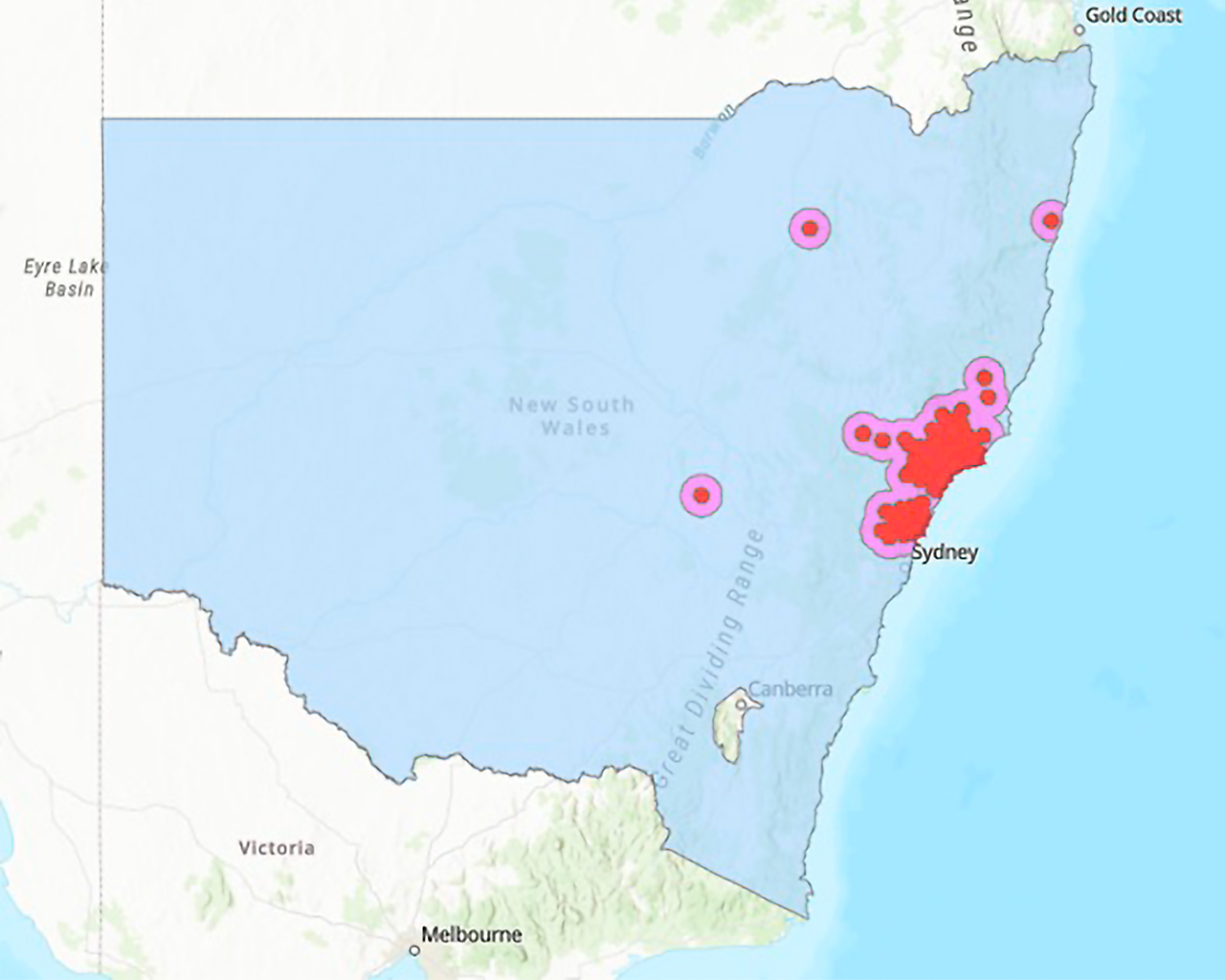
The map shows the current extent of the Varroa Mite population in NSW.
Varroa destructor mite poses a significant threat to honeybee populations and the pollination services they provide. The NSW Department of Primary Industry is committed to tackling this issue through surveillance, biosecurity measures, research and development, education, and collaborative partnerships. By implementing the above strategies, the department aims to protect honeybee health, support sustainable beekeeping practices, and safeguard the vital role of bees in agricultural ecosystems. Continued efforts are crucial to effectively manage Varroa destructor and mitigate its impact on honeybee populations in New South Wales and beyond.

Author: Mike Carter – Trainer/Assessor


